Types of textile fibers – list of textile fibers by its sources
A comprehensive textile fabric names by fiber sources
Fiber is a fine hair-like structure and is considered the raw materials of textiles. The fiber is extracted from various sources for commercial use. In addition to obtaining from animals, plants, and minerals, many of the fibers are artificially generated as well. Here is a list of most commonly used textile fibers.
Manmade Fibers
Man-made fibers are fibers in which either the basic chemical units have been formed by chemical synthesis followed by fiber formation or the polymers from natural sources have been dissolved and regenerated after passage through a spinneret to form fibers. This fiber came to success when the researchers obtained a product by condensation of molecules presenting two reactive aminic groups with molecules characterized by two carboxylic reactive groups.
Fibers from Natural Polymers
-
Bamboo Fiber
![bamboo-plant]() Bamboo is the vernacular term for perennial, giant woody evergreen plants in the grass family Poaceae. Bamboo is a natural lignocellulosic fiber obtained from bamboo culm. Its chemical composition is similar to bast fiber so, its structure and properties are often compared with other bast fibers such as flax and jute.
Bamboo is the vernacular term for perennial, giant woody evergreen plants in the grass family Poaceae. Bamboo is a natural lignocellulosic fiber obtained from bamboo culm. Its chemical composition is similar to bast fiber so, its structure and properties are often compared with other bast fibers such as flax and jute. -
Modal Fiber
![modal-fiber]() Lenzing is a company that produces Lenzing Modal® fibers, which is extracted from beech wood. Modal Fiber is very soft, shiny in nature and silk feel than mercerized cotton with the ability to absorb up to 50% more water than cotton.
Lenzing is a company that produces Lenzing Modal® fibers, which is extracted from beech wood. Modal Fiber is very soft, shiny in nature and silk feel than mercerized cotton with the ability to absorb up to 50% more water than cotton. -
Lyocell Fiber
![Lyocell Fabric]() The cellulose fibers produced by direct dissolution have the generic name of lyocell. Lyocell is similar in strength to polyester and stronger than cotton and all other man-made staple fiber cellulosic. It also has very high dry and a wet module for cellulosic fiber in both the dry and wet states.
The cellulose fibers produced by direct dissolution have the generic name of lyocell. Lyocell is similar in strength to polyester and stronger than cotton and all other man-made staple fiber cellulosic. It also has very high dry and a wet module for cellulosic fiber in both the dry and wet states. -
Rayon Fiber
![rayon-fiber]() In the production of Rayon Fiber, purified cellulose is chemically converted into a soluble compound. A solution of this compound is passed through the spinneret to form soft filaments that are then converted or “regenerated” into almost pure cellulose. Because of the reconversion of the soluble compound to cellulose, Rayon is referred to as a regenerated cellulose fiber.
In the production of Rayon Fiber, purified cellulose is chemically converted into a soluble compound. A solution of this compound is passed through the spinneret to form soft filaments that are then converted or “regenerated” into almost pure cellulose. Because of the reconversion of the soluble compound to cellulose, Rayon is referred to as a regenerated cellulose fiber.Purified cellulose for Rayon production usually comes from specially processed wood pulp and is called “dissolving cellulose” or “dissolving pulp” to distinguish it from lower grade wood pulps used for papermaking and other purposes.
-
Acetate Fiber
![acetate-fabric]() There are two types of cellulose-based fibers; regenerated/pure cellulose (such as the fibers from the cupro-ammonium process) and modified cellulose (such as the cellulose acetates and rayon).
There are two types of cellulose-based fibers; regenerated/pure cellulose (such as the fibers from the cupro-ammonium process) and modified cellulose (such as the cellulose acetates and rayon).Acetate is derived from cellulose by breaking down wood pulp (dissolving pulp) into purified cellulose. By reacting the purified cellulose with acetic acid and acetic anhydride, whilst using sulfuric acid as a catalyst, cellulose acetate dope is produced.
Fibers from Synthetic Polymers
-
Polyester Fiber
![polyester]() Polyester is a Synthetic, Non-Renewable Fiber derived from petroleum. Polyester has surpassed cotton as the most commonly produced fiber. They are used in varying applications ranging from apparel, home textiles or can be processed to be used in industrial applications.
Polyester is a Synthetic, Non-Renewable Fiber derived from petroleum. Polyester has surpassed cotton as the most commonly produced fiber. They are used in varying applications ranging from apparel, home textiles or can be processed to be used in industrial applications. -
Nylon Fiber
![nylon fabric]() Nylon a Polyamide, it is a condensation polymer. Nylon is thermoplastic silky materials that can be melt processed into fibers, films or shapes. Nylon is a tough material that is difficult to tear and exhibits excellent abrasion resistance. Nylon fibers were the first truly synthesized manufactured fibers; introduced in the 1930s as a replacement for boar bristles in toothbrushes, nylon fiber quickly found itself adapted into several forms of manufactured items.
Nylon a Polyamide, it is a condensation polymer. Nylon is thermoplastic silky materials that can be melt processed into fibers, films or shapes. Nylon is a tough material that is difficult to tear and exhibits excellent abrasion resistance. Nylon fibers were the first truly synthesized manufactured fibers; introduced in the 1930s as a replacement for boar bristles in toothbrushes, nylon fiber quickly found itself adapted into several forms of manufactured items. -
Spandex Fiber
![spandex]()
https://www.flickr.com/photos/81421369@N04/14448515208 Spandex is the generic name for synthetic fiber, whose fiber-forming substance is a long chain synthetic polymer. Spandex fibers exhibit superior stretch and elastic recovery ability, providing garments containing spandex fibers with good fitting and comfort characteristics.
-
Acrylic Fiber
Acrylic fibers are synthetic fibers made from a polyacrylonitrile polymer. Acrylic fibers are the third largest class of synthetic fiber after polyester and nylons.
-
Kevlar Fiber
![kevlar-fabric]() Kevlar aramid fiber was developed by DuPont scientists researching liquid crystalline polymer solutions. Kevlar is a manmade fiber, it as an organic fiber in aromatic polyamide family. Kevlar is made by a condensation reaction of an amine (1, 4-phenylenediamine) and acid chloride (terephthaloyl chloride).
Kevlar aramid fiber was developed by DuPont scientists researching liquid crystalline polymer solutions. Kevlar is a manmade fiber, it as an organic fiber in aromatic polyamide family. Kevlar is made by a condensation reaction of an amine (1, 4-phenylenediamine) and acid chloride (terephthaloyl chloride).



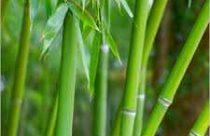 Bamboo is the vernacular term for perennial, giant woody evergreen plants in the grass family Poaceae. Bamboo is a natural lignocellulosic fiber obtained from bamboo culm. Its chemical composition is similar to bast fiber so, its structure and properties are often compared with other bast fibers such as flax and jute.
Bamboo is the vernacular term for perennial, giant woody evergreen plants in the grass family Poaceae. Bamboo is a natural lignocellulosic fiber obtained from bamboo culm. Its chemical composition is similar to bast fiber so, its structure and properties are often compared with other bast fibers such as flax and jute.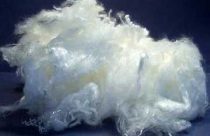 Lenzing is a company that produces Lenzing Modal® fibers, which is extracted from beech wood. Modal Fiber is very soft, shiny in nature and silk feel than mercerized cotton with the ability to absorb up to 50% more water than cotton.
Lenzing is a company that produces Lenzing Modal® fibers, which is extracted from beech wood. Modal Fiber is very soft, shiny in nature and silk feel than mercerized cotton with the ability to absorb up to 50% more water than cotton.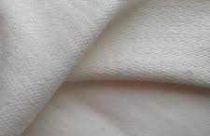 The cellulose fibers produced by direct dissolution have the generic name of lyocell. Lyocell is similar in strength to polyester and stronger than cotton and all other man-made staple fiber cellulosic. It also has very high dry and a wet module for cellulosic fiber in both the dry and wet states.
The cellulose fibers produced by direct dissolution have the generic name of lyocell. Lyocell is similar in strength to polyester and stronger than cotton and all other man-made staple fiber cellulosic. It also has very high dry and a wet module for cellulosic fiber in both the dry and wet states.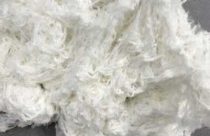 In the production of Rayon Fiber, purified cellulose is chemically converted into a soluble compound. A solution of this compound is passed through the spinneret to form soft filaments that are then converted or “regenerated” into almost pure cellulose. Because of the reconversion of the soluble compound to cellulose, Rayon is referred to as a regenerated cellulose fiber.
In the production of Rayon Fiber, purified cellulose is chemically converted into a soluble compound. A solution of this compound is passed through the spinneret to form soft filaments that are then converted or “regenerated” into almost pure cellulose. Because of the reconversion of the soluble compound to cellulose, Rayon is referred to as a regenerated cellulose fiber. There are two types of cellulose-based fibers; regenerated/pure cellulose (such as the fibers from the cupro-ammonium process) and modified cellulose (such as the cellulose acetates and rayon).
There are two types of cellulose-based fibers; regenerated/pure cellulose (such as the fibers from the cupro-ammonium process) and modified cellulose (such as the cellulose acetates and rayon).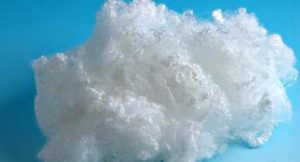 Polyester is a Synthetic, Non-Renewable Fiber derived from petroleum. Polyester has surpassed cotton as the most commonly produced fiber. They are used in varying applications ranging from apparel, home textiles or can be processed to be used in industrial applications.
Polyester is a Synthetic, Non-Renewable Fiber derived from petroleum. Polyester has surpassed cotton as the most commonly produced fiber. They are used in varying applications ranging from apparel, home textiles or can be processed to be used in industrial applications. Nylon a Polyamide, it is a condensation polymer. Nylon is thermoplastic silky materials that can be melt processed into fibers, films or shapes. Nylon is a tough material that is difficult to tear and exhibits excellent abrasion resistance. Nylon fibers were the first truly synthesized manufactured fibers; introduced in the 1930s as a replacement for boar bristles in toothbrushes, nylon fiber quickly found itself adapted into several forms of manufactured items.
Nylon a Polyamide, it is a condensation polymer. Nylon is thermoplastic silky materials that can be melt processed into fibers, films or shapes. Nylon is a tough material that is difficult to tear and exhibits excellent abrasion resistance. Nylon fibers were the first truly synthesized manufactured fibers; introduced in the 1930s as a replacement for boar bristles in toothbrushes, nylon fiber quickly found itself adapted into several forms of manufactured items.
 Kevlar aramid fiber was developed by DuPont scientists researching liquid crystalline polymer solutions. Kevlar is a manmade fiber, it as an organic fiber in aromatic polyamide family. Kevlar is made by a condensation reaction of an amine (1, 4-phenylenediamine) and acid chloride (terephthaloyl chloride).
Kevlar aramid fiber was developed by DuPont scientists researching liquid crystalline polymer solutions. Kevlar is a manmade fiber, it as an organic fiber in aromatic polyamide family. Kevlar is made by a condensation reaction of an amine (1, 4-phenylenediamine) and acid chloride (terephthaloyl chloride).
Wow Thanks! This is super clear.
Wow, superb weblog structure! How lengthy have you ever been blogging for? you made blogging glance easy. The overall glance of your site is wonderful, let alone the content!